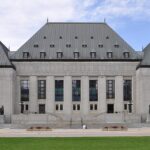Letter on Rossland's proposed Short-Term Rental bylaw
The letter below is by Mike Maturo, who served as Rossland’s Manager of Planning and Development Services from May 2007 – September 2013.
Dear Mayor/Council,
Two minutes at the March 11, 2024 Public Hearing does not allow enough time to unpack Bylaw 2828 and all of its potential negative impacts. Here’s a synopsis of what Bylaw 2828 facilitates as outcomes and its non-alignment w OCP Policies or Goals:
- Conflicts with several OCP Policies and Goals
- Subsections of OCP Policy 7.4 Development in Existing Neighbourhoods; 7.3 Housing Diversity and Inclusivity; and 11.2 Educational:
- 7.3.1; 7.3.7; 7.4.1; 7.4.4; 11.2.6; 11.2.7
- Subsections of OCP Policy 7.4 Development in Existing Neighbourhoods; 7.3 Housing Diversity and Inclusivity; and 11.2 Educational:
- Leads to over 1000 STRs within the traditional town site
- Distortion of demographics:
- Less housing options for 18 – 35 crowd
- LT trend of SFD neighborhoods to lose FT population & school-age cohorts
- Outnumbering of visitors to permanent Rossland residents during peak demand
- Economic and social pressure to decrease permanent FT population
- Reduction to elimination point of supply of SFDs for conversions – less housing choice
- Wholesale transformation of neighbourhood character – introduction of ghost blocks
- Displacement of labour due to absence of LTRs – higher GHG impacts
- Increase in housing costs
- Creation of new high speculation area – traditional townsite – in local housing supply
- On-street parking during peak rental periods
- Over-capacity lodging w/o principal resident on site
- GHG increase due to more commuting from town to ski hill, more traffic on local roads
- More severe seasonal economic downswings for local businesses
The following below is a lengthier explanation that covers the bullet points above.
A nearly 100% relaxation on the restrictions to allowing short-term rentals (STRs) in single-family dwellings (SFDs) in the traditional town site would lead to multiple-sector long-term impacts and strike a new path for the Rossland community, none of which have been explained in the report to Council nor brought to the public’s attention. As Bylaw 2828 facilitates outcomes that conflict with OCP policies and goals, there should be a public consultation process to introduce new OCP policies and goals that allow alignment of Bylaw 2828 with the OCP (with while rescinding others that would place it in conflict); this letter, however, opposes any OCP accommodation of Bylaw 2828.
It is also notable that while the municipality highlights on its own web site its desire to have a speculation tax applied to resort municipalities like Rossland, it has, counter-intuitively, drafted a bylaw that would certainly invite more speculation and further drive up the cost of all housing, SFD housing especially, once that type of housing within a slow growing or nearly fixed SFD supply, comes under higher demand by becoming a revenue-generating STR.
Easing restrictions to allow STRs across the traditional town site also reduces the opportunity to increase densities (through house conversions) on SFD properties that would hypothetically take advantage of the STR bylaw. Once a property becomes an STR, there is a regulatory disincentive to change to another housing form, particularly when only SFDs can become STRs. Adoption of this bylaw would invite the market to pounce on the traditional town site, further exacerbating local housing challenges. With a proliferation of STRs in the traditional town site, the DNA of the municipality would be changed forever. Short-term renters would periodically (initially), and eventually permanently, be the predominant population cohort, with high risk of the evolution of ghost neighbourhoods in the off-seasons. Businesses now reliant and planning on Rossland’s 4000 or so permanent residents would face a new economic reality. Significant de-population, after 20 years of a steady increase, stands as a likely outcome.
As noted to Council, in the lead up in 2011 to the zoning bylaw (2518) coming forward to Council that November, there were a series of public information meetings to highlight the significant changes that the bylaw featured (compared to the previous one) that would advance OCP objectives, particularly on infill and density. Additionally, due to the progressive nature of the R1-Infill Zone in Bylaw 2518, letters to all residents were sent out twice to alert them to issues that could be seen as controversial: raised height for garages with secondary suites; reduced minimum lot size for subdivision to 270 sq m.; house conversions for up to three units; all to be processed administratively, doing away with an application process and a political council decision. In comparison, Bylaw 2828, which would have much more of a significant (albeit detrimental) wholesale impact on the traditional town site and on Rossland’s social contract – likely inhibiting densification while reducing housing variety and affordability – has not been preceded by such preliminary notification to residents. This is somewhat bewildering. Under Bylaw 2828, once an SFD becomes an STR, the regulatory disincentive to convert an SFD to a multiple-unit dwelling is stifled. With Bylaw 2828, Rossland adds to the challenges of creating alternative housing forms by promoting SFDs (some 90% of the traditional townsite’s housing stock) to forever remain as such.
Further to the above point, the municipality, like the province and rest of Canada, has been witnessing the hottest real estate market in memory. Relieving restrictions on STRs across the traditional town site will fuel even more speculation on SFD properties who register as “Residential STRs,” likely forever freezing them as such and taking them out of the market for house conversions and long-term rentals, once they become profitable, marketed, STR assets – speculative investment assets. (No OCP policy or goal aligns with this outcome.)
In short, a number of critical items were not noted in the report to Council, specifically the negative impacts such a law would have on advancing policies and achieving goals of the OCP. Bylaw 2828 facilitates outcomes that contravene OCP Policy 7.4 Development in Existing Neighbourhoods; 7.3 Housing Diversity and Inclusivity; and 11.2 Educational:
7.3.1 Support a diverse and inclusive mix of housing forms, unit types and sizes, tenures, and price options within each development and neighbourhood
7.3.3 Encourage, using zoning regulations, incentives and partnerships, a variety of accommodation types, tenures, and sizes ensuring that residents of all ages and incomes have a diversity of market and non-market housing choice.
7.3.7 Amend the Zoning Bylaw to support and permit a greater variety of multi-family housing types and styles to address the “missing middle” (affordable market-rate rental and owned housing).
7.4.1 Encourage and support residential infill that contributes to complete, compact and livable neighbourhoods in order to improve economic efficiency regarding municipal services and maintenance. To that end, support residential lots, in areas serviced by municipal water and sewer and transportation systems in areas that can satisfy the requirements of the City of Rossland Subdivision and Servicing Bylaw and Zoning Bylaw.
7.4.4 Continue to support the conversion of existing larger single-family homes into multiple unit buildings.
OCP 11.2 Education
11.2.6 Consider partnering with higher education institutions to provide post-secondary education opportunities in Rossland.
11.2.7 Support a full curriculum of public education from kindergarten through grade 12 in Rossland.
A rough estimate suggests some 1300 – 1500 SFDs in Rossland could quickly become STRs; presenting a potential sea change in how the municipality’s character and servicing needs. Short-term visitors (who do not send their kids to local schools, who do not understand the recycling system, who are unfamiliar with local bylaws, who are unaware of the long-term neighbours, etc.) treat the municipality and behave much more differently than those who live as permanent residents. The noted enforcement of parking regulations, for example, is not based on sound evidence as short-term renters of a 3 – 4 BR house can arrive as couples and overwhelm the parking spaces. As it is currently in Rossland, some dozens of residents, with adjacent empty driveways, still park their cars on the local roads, impeding the bus route. It’s been happening for years, so how can the municipality suggest compliance with an even more car-crowded future via Bylaw 2828? Moreover, it’s not a stretch to suggest that short-term renters will stuff a house well beyond maximum capacity, with more cars arriving than can be parked on the property, leading to on-street parking impacts (particularly problematic in winter).
It is also not clear why the traditional town site’s permanent residents would presumably feel comfortable should whole blocks become STRs during say peak winter season demand. The bylaw allows for principal residents to rent the STR for up 3 months without their presence. Rossland has no capacity to monitor over 1000 STRs to see if the principal resident is present nor can it foresee just how many visiting cars will end up parking on the street during winter storm events. A dramatic de-regulation that permits short term rental units across the traditional town site with an allowance for no principal resident on site for up to three months will absolutely change the character of Rossland’s residential neighbourhoods. Nothing in the OCP supports such a wholesale transformation or suggests a wholesale, cross-town laissez-faire approach to STRs at the expense of neighbourhood character, LTRs and servicing efficiencies.
Facilitating a transformation via Bylaw 2828 in which visiting short-term renters outnumber long-term residents in the traditional town site also presents as a new phenomenon. The alteration of population cohorts prompts consideration for the impacts on the social, environmental and economic character of Rossland, impacts that should be well captured in its OCP. This letter does not support such an OCP amendment, but instead emphasizes that, procedurally speaking, an OCP amendment (and public consultation) should be required first to then allow Bylaw 2828 to advance as it is completely inconsistent (in the outcomes it would facilitate) with Rossland’s current OCP. Just consider the scenario in which 4/5 of the municipality are tourists, that’s 1000 permanent residents among 4000 tourists – this is an outcome, a big change in town character, that Bylaw 2828 facilitates.
For over 20 years, Rossland has planned for a large amount of STRs at Red Mountain (1600) and Redstone (400), some ~2000 dwelling units allowed through the OCP and zoning density formulas. Although neither area is fully built out, there are plenty of STRs already allowed to absorb STR market demand. There is no rationale (economically, socially, environmentally) in the report explaining why the municipality should amalgamate the zoning for STRs across the traditional town site. The permitted STRs at Red and Redstone are a key reason for development at those two sites. Some explanation as to why such a move makes sense within some context of the OCP’s current social, economic, environmental tenets is in order. However, there is no reason (stated or otherwise) that Rossland needs to add more than 1000 STRs at the expense of losing its established, permanent-resident character in the traditional town site or why the majority of Rossland’s long-term residents would prefer such a wholesale change to the regulation of their neighbourhoods.
The report noted that some people, no number cited, were dissatisfied with the 1 STR/block formula that had been allowed. The report also stated that the process to allow a density of 1 STR/block was deemed “not fair.” This alone is not solid rationale easing zoning restrictions on STRs, an easing of restrictions to the point of inviting chaos and undermining, via regulatory deletion, a critical community building block of the municipality. Bylaws and land-use regulations are not intended to please individuals, but instead to facilitate an orderly development over time of a community vision; not every citizen is always pleased by them or finds them “fair,” whatever “fair” subjectively means.
Less available housing and less available long-term rentals stand against OCP goals and policies, yet those two outcomes loom large should Bylaw 2828 be adopted. Expect a tighter labour market through the economic-driven distortion of demographics, skewed, missing the 18 – 35 year-old crowd who will not be able to find, let alone afford, a place to rent; labour pushed out of town means higher GHG impacts. STRs in the traditional town site would compete with those at Redstone and Red Mountain, the latter with much more spatially efficient multi-plex units at Red Mountain. This would likely mean more people commuting to/from Red Mountain in the winter, driving up GHGs and (absent reliable mass transit) putting more wear and tear on local roads. As Rossland has no DCC bylaw, this approach is also antithetical to any economic platform on funding infrastructure planning.
So for Bylaw 2828 to advance any further, and while this is not advised, new OCP Policies and Goals would have to be drafted to allow alignment of that new draft zoning bylaw with a substantially amended OCP.
Council is strongly advised to not advance Bylaw 2828 any further given the long-term negative consequences that can be seen in any North American resort municipality that has liberally permitted STRs throughout its political boundaries. Council is strongly encouraged to retain the existing zoning designations in which STRs are nearly exclusive to Red Mountain and Redstone. The municipality needs more housing variety for all ages and social cohorts and more long-term rentals (not more STRs) in the traditional town site to meet the current, afore-mentioned OCP policies and goals. Bylaw 2828’s impacts would open up the traditional town site to global market forces and neutralize Rossland’s ability to retain it’s healthy, multi-cohort character.
Mike Maturo
























